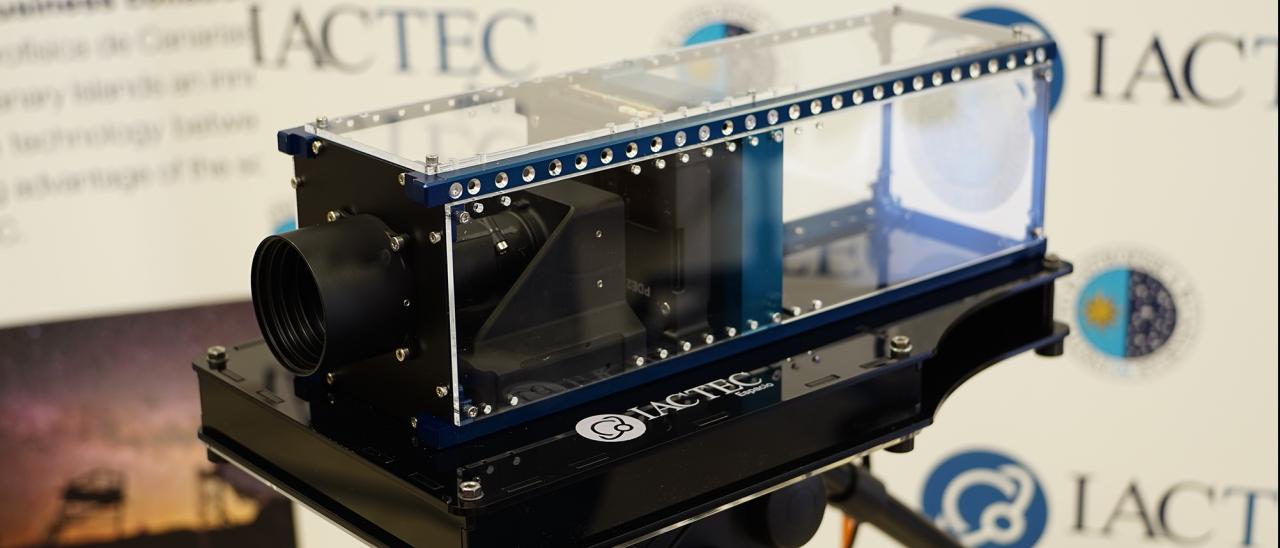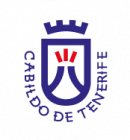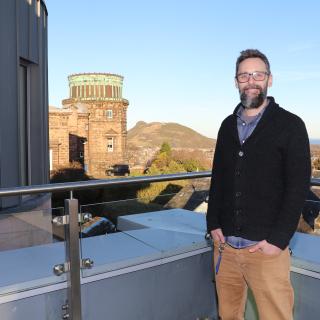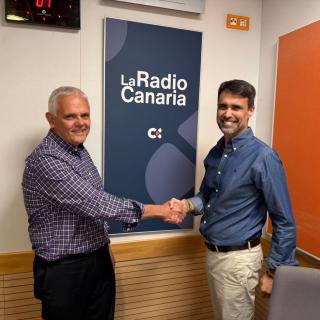A group of scientists and engineers from IACTEC Espacio, of the Instituto de Astrofísica de Canarias (IAC), will participate in the Second Spanish Small Satellites International Forum 2020 (SSIF) which will take place on 25th, 26th and 27th pf February in Málaga.The personnel from IACTEC-Espacio will present three studies on the development of technology which will help improve the working of nanosatellites as well as having a stand which will show off the developments and capacity of IACTEC.
IACTEC (Space, Technology, Medicine and Large Telescopes) is the centre of technical and commercial collaboration of the Instituto de Astrofísica de Canarias (IAC), whose mission is to develop an innovative environment for the transfer of high technology between the public sector and companies, making use of the scientific and technological capital of the IAC.
New Technologies
Within its three lines of activity, the Space division of IACTEC, (among other projects) is driving forward with innovation and technological developments related to the building of payloads for micro- and nano-satellites, a growth sector with great repercussion in areas such as communications, security, and the management of the environment.
The initial focus, to build up the programme, is Earth observation, although in the future the technological capacity acquired will be used to develop projects of space observations with this type of satellites.
The technologies to be developed are those related to the design and development of detectors (control, hardware, and pre-processing of images), the optical design of high resolution cameras, with due attention to the selection of new materials suitable for space and the use of advanced techniques of ultra-resolution, as well as how to obtain useful information from the images taken from satellites.
Within this project the first project of IACTEC to be shown at the SSIF will be DRAGO, the first instrument designed and fabricated at IACTEC-Space. As well as this, two other projects will be presented, one about the processing of high resolution images for space-borne cameras in small satellites, and the other about the design of a configurable power controller. The main authors of these studies are Alfonso Ynigo Rivera, Samuel Sordo Ibáñez and José Carlos Sanluis Leal, respectively, supported by the rest of the team: Carlos Colodro Conde, Pablos González de Chaves, Ignacio Bustamente Bengoechea, Pablo Redondo Caicoya, José Javier Díaz García, and Roberto López López.
DRAGO
These technologies will be put into use in DRAGO, a compact space camera, develped to observe the Earth in the short wavelength infrared, and which will be carried on board nanosatellites. DRAGO will also be one of the first instruments to explore the use of unrefrigerated infrared detectors, using chips made with a compound of indium and gallium arsenides.
The DRAGO camera will perform observations in two infrared passbands,(1.1 amd 1.6 microns) which are separatedusing a monolithic filter with two stripes mounted above the sensor. The design has ensured that the complete instrument can be easily integrated into a satellite 3U 30x10x10 cm). DRAGO measures 1.3U (13x10x10 cm) and uses power of less than 5.4W.
The lens mouting is based on standard commercial lenses for the infrared wavelength range which have been reinforced by IACTEC to ensure that they work well in low Earth orbit.
The camera will include high performance hardware and software, developed in IACTEC, so as not only to take high velocity images (over 160 frames per second) but to process them on board the satellite, including the capacity for super-resolution, compression, and encryption.
To ensure a useful lifetime of three years for the nanosatellite, the sensitive electronics is protected, and systems of isolation and recovery against failure have been developed.
ALISIO-I
The DRAGO instrument will be integrated into ALISIO-I, the firs mission completely developed by the team at IACTEC-Space, whose aim is to send up one of the first nanosatellites for observing the Earth in the short wavelength infrared (SWIR). Its launch is planned for the second or third trimester of 2021.
This mission has two objectives. First, to demonstrate the possibility of observing the Earth in the near infrared from a 3U+ nanosatellite, and second, to build up a multidisciplinary team which can design payloads for small satellites, according to the strictest ECSS (European Cooperation for Space Standardization) satellites.
Observing in the short wavelength infrard gives crucial information not available in the visible range. Analysis of the spectrum in the near infrared allows us to measure índices of vegetation, to detect the hot points of fires, and the detection and characterization of oil spills. Adding this observing band to the nanosatellite market will make a significant increase in the number of applications available using small platforms.
The SSIF is a key international workshop hich brings together all those working in the sector, such as designers, technicians, scientists, suppliers, developers, and launchers. This forum offers a unique opportunity to build networks and knowledge about the current state and future tendencies of the small satellite sector.
The work in IACTEC is supported by the Cabildo of Tenerife, which funds the programme “Technological Capacitation IACTEC” from which come the engineering resources of IACTEC-Space, within the framework of MEDI (acronym in Spanish for Strategic Framework for Island Development). It is also supported by the Government of the Canaries, the Ministry of Economy and Competitivity, the European Fund for Regional Development (FEDER), the Fund for the Development of the Canaries (FDCAN), and the Horizon 2020 programme.










